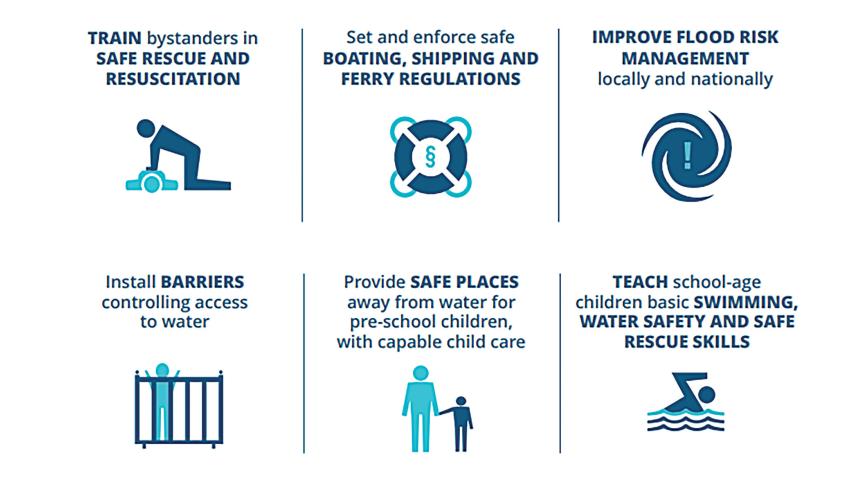Anyone can drown, no one should

Drowning has caused over 2.5 million deaths in the last decade. The overwhelming majority of these deaths (90%) happen in low- and middle-income countries. Globally, the highest drowning rates occur among children aged 1–4 years, followed by children aged 5–9 years.
The human, social and economic toll of these losses is intolerably high, and entirely preventable.
In 2023, the 76th World Health Assembly adopted its first ever resolution on drowning prevention. The resolution accepts the invitation of the United Nations General Assembly for the World Health Organisation (WHO) to coordinate actions within the United Nations (UN) system on drowning prevention and facilitate the observance of World Drowning Prevention Day on 25 July each year.
Globally, 25 July is observed as the World drowning prevention day. To mark this year's World Drowning Prevention Day, WHO will continue to focus on raising awareness on drowning as a public health issue, reminding people that anyone can drown, but no one should.
They are also raising awareness on the six evidence-based, low-cost drowning prevention interventions that countries and organisations can use to drastically reduce the risk of drowning. These include actions for technical partners.
Drowning does not have a single cause, or a single solution. But it can be prevented.
Some governments have started the process of developing national strategies for drowning prevention. Groups hosted public awareness events and launched water safety campaigns. Countless individuals acted by learning and sharing new skills (swimming, safe rescue and resuscitation), or providing support to a drowning prevention group or activity.
One problem, many solutions - building on this momentum, WHO now asks countries and partners to respond to the call to action for global drowning prevention.
If you are not yet involved in drowning prevention then do one thing. There is so much that can be done, whether you are an individual, a group (organisation or community) or a government.
If you have already started to work in your area on drowning prevention, then improve one thing. There is always an opportunity to engage a broader range of partners, identify parts of your efforts that are not working as well as they should, or connect with a high-risk group for drowning that your efforts have not reached yet.
If you are deeply engaged with drowning prevention and have a mature programme or a portfolio of programmes, then add one thing. Look for ways of adding to your portfolio of action, tackle a new part of the drowning context in your setting, or broaden your efforts to reduce drowning in other settings. There is always more that can be done.
Individuals can play a crucial role in preventing drowning and promoting water safety. Expand your knowledge on drowning prevention through reviewing resources.



 For all latest news, follow The Daily Star's Google News channel.
For all latest news, follow The Daily Star's Google News channel.
Comments